Results 531 to 540 of 12091
Thread: Anandtech News
-
06-01-11, 09:30 PM #531
Anandtech: Windows 8 on AMD, Intel, NVIDIA, Qualcomm & TI: Let the Race Begin
I'm in the audience of Microsoft's Partner Preview for Computex 2011, basically an event to give a sneak peak of the future of Windows to press and MS partners here in Taipei.
Of course I'm talking about Windows 8. On stage there are several systems running a wide variety of hardware. Microsoft has machines from AMD, Intel, NVIDIA (presumably a Tegra 2 or Kal-El notebook?), Qualcomm and Texas Instruments. That's five players when Windows 7 really only launched on platforms from two different silicon vendors.
We've got a race here folks and it's anyone's game. Intel has the lionshare of traditional PCs, but Qualcomm is really the Intel of the ultra mobile world. How this race plays out over the next two years is going to be very interesting. With five players here today, you can expect that list to dwindle over time. Remember when there were 4 players in the x86 CPU race?
{gallery 1119}
More...
-
06-01-11, 10:00 PM #532
Anandtech: This is the Windows 8 Tablet & PC Interface
Here's a quick look at the new start screen for Windows 8 running on a Dell XPS Development Tablet. The tablet supports both touch and external keyboard interfaces. The UI is ridiculously smooth, it seems even quicker than Windows Phone 7.
On tablets Windows 8 will support PlayBook like bezel gestures (the gestures actually take place on the first pixel next to the bezel, apparently not in the bezel itself). Gestures for the OS take place on the left/right edges of the screen, while app gestures happen on the top/bottom bezel.
Swipe in from the right to reveal the start button, and swipe in from the left to multitask. You just swipe between active apps like you would on a PlayBook.
The interface doesn't require a touchscreen, Microsoft showed how you can multitask or switch between screens using a keyboard on a standard PC as well. This will be a common interface across all Windows 8 devices, tablet or standard PC.
Tapping the start button switches between the standard Windows desktop and the new tile interface. You can even display multiple applications on the screen at the same time using Windows 8's snap feature.
With a widescreen display (apparently snap isn't supported yet on 4:3s) you can display two apps side by side in the new tablet style UI:
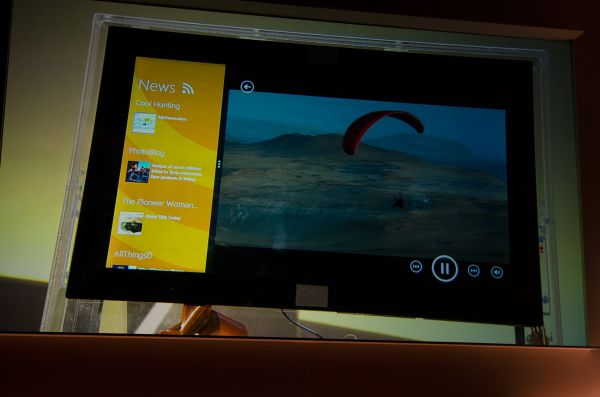
You can even have a standard Windows 8 desktop on one side and a new Windows 8 app on the other.
Microsoft also mentioned that Windows 8 will have the same system requirements or lower vs Windows 7.
{gallery 1120}
More...
-
06-01-11, 10:10 PM #533
Anandtech: Windows 8 Running on ARM, NVIDIA Kal-El Notebook Demoed
Microsoft just showed Windows 8 running on three different ARM platforms: a single-core 1.2GHz Qualcomm Snapdragon, a dual-core TI OMAP 4430 and a quad-core NVIDIA Kal-El notebook.
The same interface we showed you earlier exists on these systems, and the same applications can run across both systems (assuming the apps have been ported to ARM).
You get a standard Windows 8 desktop as well as the new tiled start screen. USB devices will work and MS even did a demo of copying files off of a USB thumb drive.

NVIDIA had a Kal-El based notebook and tablet on display. Microsoft showed task manager displaying all four threads during H.264 decode acceleration.
{gallery 1121}
More...
-
06-01-11, 11:10 PM #534
Anandtech: Micron's P320h: A Custom Controller Native PCIe SSD in 350/700GB Capacitie
SSDs are beginning to challenge conventional drive form factors in a major way. On the consumer side we're seeing more systems use new form factors for SSDs, enabled by mSATA. The gumstick form factor used in the MacBook Air and ASUS UX Series comes to mind. SSDs can offer performance in a smaller package, thus helping scale down the size of notebooks.
The enterprise market has seen a form factor transition of its own. While 2.5" SSDs are still immensely common, there's a lot of interest in PCIe solutions.
The quick and easy way to get a PCIe SSD is to take a bunch of SSDs and RAID them together on a single PCIe card. You don't really get a performance benefit, but it does help you get a lot of performance without being drive-bay limited. This is what we typically see from companies like OCZ.
The other alternative is a native PCIe solution. In the aforementioned example, you typically have a couple of SATA SSD controllers paired with a SATA to PCIe RAID controller. With a native solution you'd skip the RAID controller entirely and just have a custom SSD controller that interfaces directly to PCIe. A native PCIe SSD is just an SSD that avoids SATA entirely, thus avoiding any potential bottlenecks. Today Micron is announcing its first native PCIe SSD: the P320h.

The P320h is Micron's first PCIe SSD as well as its first in-house controller design. You'll remember from our C300/C400/m4 reviews that Micron typically buys its controllers from Marvell and simply does firmware development in house. The P320h changes that. While it's too early to assume that we'll see Micron designed controllers for consumer drives as well, clearly that's a step the company is willing to take.
The P320h's controller is a beast. With 32 parallel channels and a PCIe gen 2 x8 interface, the P320h is built for bandwidth. Micron's peak performance specs speak for themselves:
Sequential read/write performance is up to 3GB/s and 2GB/s respectively. Random 4KB read performance is up at a staggering 750,000 IOPS, while random write speed peaks at 341,000 IOPS. The former is unmatched by anything I've seen on a single card, while the latter is a number that OCZ's recently announced Z-Drive R4 88 is promising as well. Note that these aren't steady state numbers nor are the details of the testing methodology known so believe accordingly.
There is of course support for NAND redundancy, which Micron calls RAIN (Redundant Array of Independent NAND). Micron calls RAIN very similar to RAID-7 with 1 parity channel, however it didn't release information as to what sorts of failures are recoverable as a result. RAIN in addition to typical enterprise level write amplification concerns result in a some pretty heavy overprovisioning on the drive as you'll see below.
Micron will offer the P320h in two capacities: 350GB and 700GB. The drives use 16Gbit 34nm SLC NAND (ONFI 2.1). The 700GB drive features 64 package placements with 8 die per package - that works out to be 16GB per die, or 1TB of NAND on the card.
The 350GB version has the same number of package placements (64) but it only has 4 die per package, which works out to be 512GB of NAND on board. Obviously with twice as many die per package there are some interleaving benefits which result in better 4KB random write performance.
Pricing is unknown at this point, although Micron pointed out that it is expecting cost to be somewhere south of $16 per GB (at $16/GB that would be $5600 for the 350GB board and $11,200 for the 700GB board).
More...
-
06-01-11, 11:30 PM #535
Anandtech: Windows 8: IE10, Touchscreen Keyboards and File System Access
Microsoft showed us IE10 on Windows 8, which honestly has a very iOS-like feel to it. You get smooth scrolling and panning, with a PlayBook style support for tabs. It's amazing how much of the Windows 8 UI looks a lot like RIM's first tablet.
The URL bar is hidden by default but it's actually at the bottom of the screen when revealed. Microsoft has a couple of touchscreen keyboard options, a standard mobile OS keyboard and a split version that lets you type with two thumbs while holding a tablet.
Microsoft also showed that you've got full access to the underlying file system regardless of whether you're in standard Windows mode or the new tile based start screen with lighter weight HTML5 apps.
Overall I'm very impressed with what Microsoft has shown thus far. It's a pretty well done mix of a tablet based UI without giving up the traditional Windows interface.
{gallery 1122}
More...
-
06-02-11, 02:10 AM #536
Anandtech: AVADirect's Clevo X7200 Redux: AMD 6970M CF Takes the Crown
A little over seven months ago, we took at look at a Clevo X7200 courtesy of AVADirect that featured a desktop hex-core processor and a pair of NVIDIA's then-fastest mobile graphics cards, the GeForce GTX 480M. Since then NVIDIA has refreshed their mobile top end, and while we hope to review the GTX 485M in SLI soon, in the meantime we have another pair of mobile parts that have been making waves: the AMD Radeon HD 6970M.

This is still the same chassis, of course, so if you didn't like the X7200 concept the first time around the updated GPUs aren't going to radically alter the equation. But assuming you're after the most powerful notebook currently on the market, let's see if we can set a few more performance records.
More...
-
06-02-11, 02:10 AM #537
Anandtech: TI Announces OMAP 4470 and Specs: PowerVR SGX544, 1.8 GHz Dual Core Cortex
The last time we visited TI's OMAP 4 SoC was at Mobile World Congress, there we benchmarked the LG Optimus 3D and came away decently impressed with performance even on a pre-launch device. Back then, Anand wrote that the remainder of this year and the next is going to be a heated battle for dual core and quad core SoCs fighting in the tablet and smartphone space. After today, you can add Windows 8 to that list as well. Today, TI is announcing its latest SoC, the OMAP4470, which offers a 20% increase in CPU clocks and an entirely different SGX 544 GPU over OMAP4460.
Read on for more details.
More...
-
06-02-11, 03:30 PM #538
Anandtech: Qualcomm Uplinq 2011 Day Two Keynote - HTC and Nokia
Today is the second and last day of Qualcomm's Uplinq conference in San Diego California, but we've still got a bunch in store. This morning, we sat down at the keynote and listened to HTC CEO Peter Chou talk about where HTC has been, its plans for the future, and make an announcement about HTC Sense development. After that was Nokia CEO Stephen Elop, who outlined five principles which will help Nokia foster its own new mobile ecosystem in a joint partnership with Microsoft.

Read on for more from these two keynotes.
More...
-
06-02-11, 08:00 PM #539
Anandtech: Infrastructure as a Service: Benchmarking Cloud Computing
Many feel that cloud computing is just old wine in new bottles, but Infrastructure as a Service, the foundation of cloud computing, is a very interesting evolution of the current hosting formulas. A good cloud hosting starts by building on a clustered hosting solution: instead of relying on one server, we get the high availability and the load balancing capabilities of a complete virtualized cluster. Virtualization allows the management software to carve up the cluster any way the customers like--choose the number of CPUs, RAM and storage that you want and make your own customized server; if you need more resources for a brief period, the cluster can provide this in a few seconds and you only pay for the time that you actually use this extra capacity. Best of all, cloud hosting allows you to set up a new server in less than an hour. Cloud hosting or Infrastructure as a Service (IaaS) is definitely something new. Technically it is evolutionary, but from the customer point of view it offers a kind of flexibility that is revolutionary.
Terremark was one of the first hosting providers to offer such IaaS services. With clients including the USA.gov site and the Federal Communications Commission (FCC), they seem to have gotten IaaS right. But we don’t care much about the marketing fluff; we want to start benchmarking in true AnandTech style. We want to know what kind of performance we get when we purchase a certain amount of resources. If we buy 5GHz or 20GHz of CPU power, what do we get? Can IaaS really replace your own server infrastructure if you are running some heavy duty applications? Read on for our investigation and analysis.
More...
-
06-03-11, 12:30 AM #540
Anandtech: Computex 2011: SuperTalent Introduces SandForce Powered USB3 Stick
The very first enthusiast SSDs had their roots in USB drives. Memory vendors that were making USB sticks thought to put a bunch of NAND in parallel behind a rudimentary NAND to SATA controller and you had an SSD. Performance characteristics looked great on paper but of course there were teething problems.
These days the reverse has happened. High end USB sticks now look a lot like small SSDs. USB 3.0 SSDs were either too bulky to carry around or weren't that impressive from a performance standpoint, but SuperTalent just showed me one that is quite tempting.
This is the SuperTalent USB 3.0 Express RC8, it's a USB stick that has a SF-1222 controller just like the previous generation of high end SSDs:
With four NAND devices on board, the RC8 actually has 8-channels feeding two die per package. Two channels are routed to each device, hence the use of BGA NAND vs. TSOP. SuperTalent uses 25nm IMFT NAND for the drive.
Performance as a result is quite impressive. Over USB 2.0 you're looking at a maximum of around 40MB/s, but over USB 3.0 you can hit 200MB/s with highly compressible data:
Worst case performance for incompressible sequential writes over USB 3.0 is still only 32MB/s thanks to the one-die-per-channel architecture (as well as inherent SF limitations). Read speed is still excellent however at nearly 180MB/s.
The performance characteristics make this drive less ideal for copying large compressed videos to, but great for general use. In fact, running/installing applications or even running a full OS environment from the drive is likely a pretty good experience.
SuperTalent will offer the RC8 in 25GB, 50GB and 100GB capacities (with 32GB, 64GB and 128GB of NAND on board).
Expect availability starting late this month and pricing to be inline with standard SF-1222 based SSDs (~$110 for the 50GB drive).
{gallery 1130}
More...
Thread Information
Users Browsing this Thread
There are currently 18 users browsing this thread. (0 members and 18 guests)






 Quote
Quote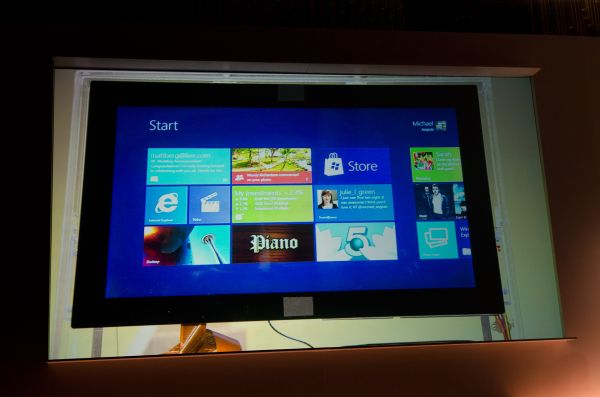
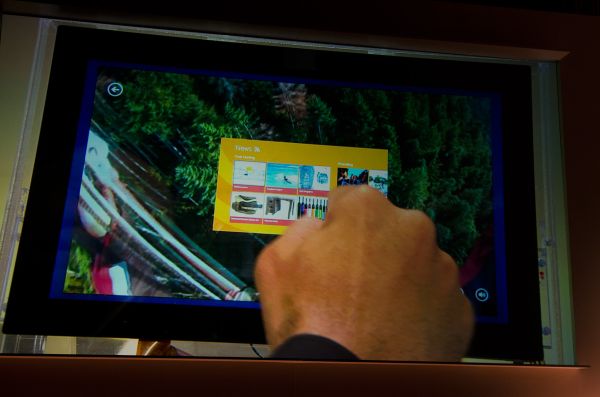
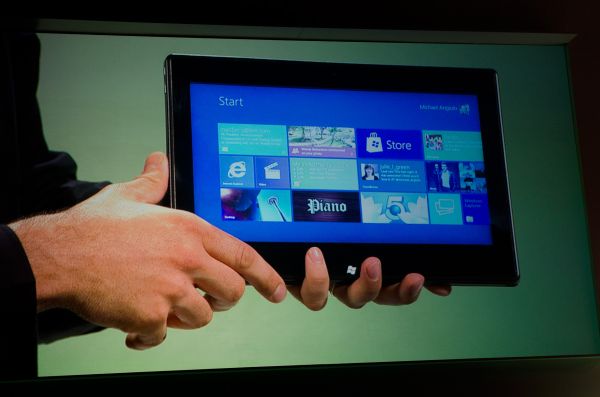
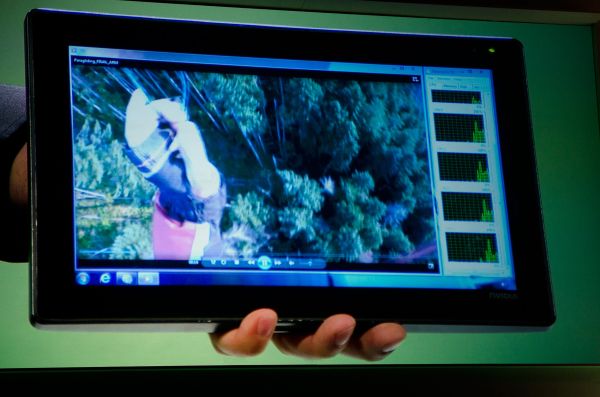
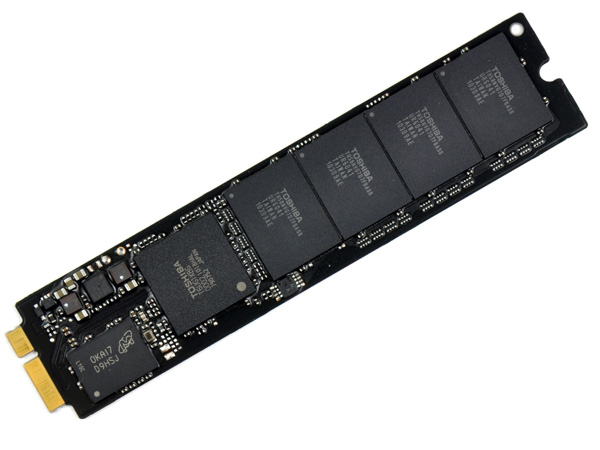

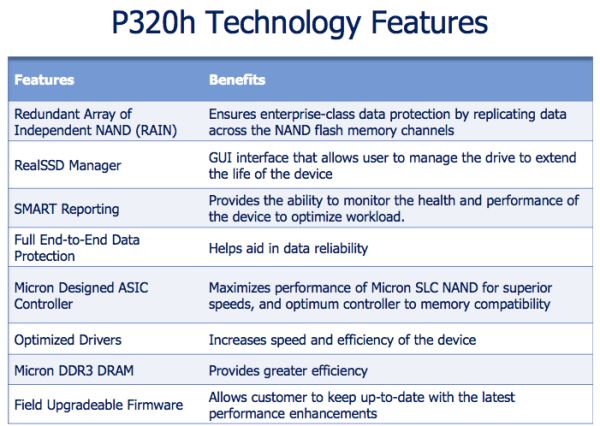


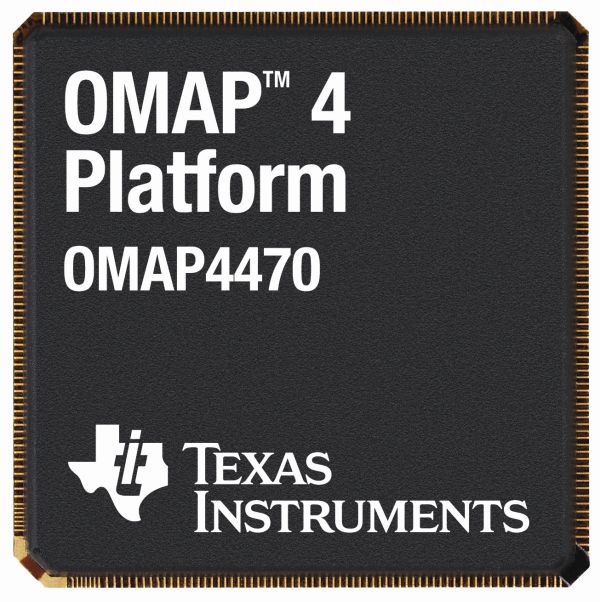
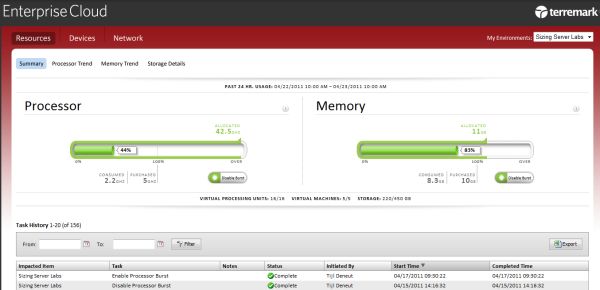

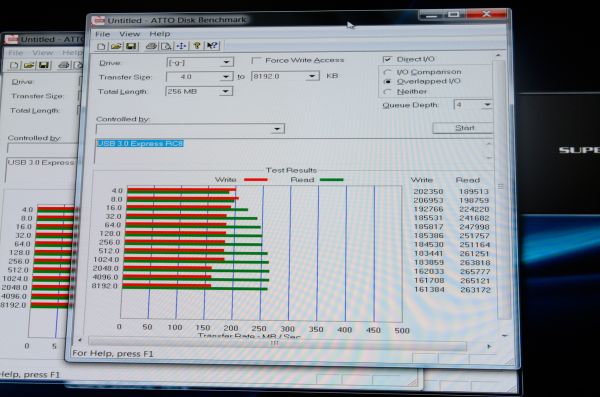
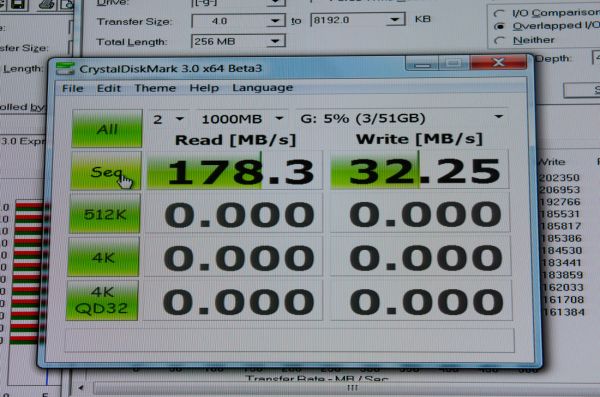
















Bookmarks